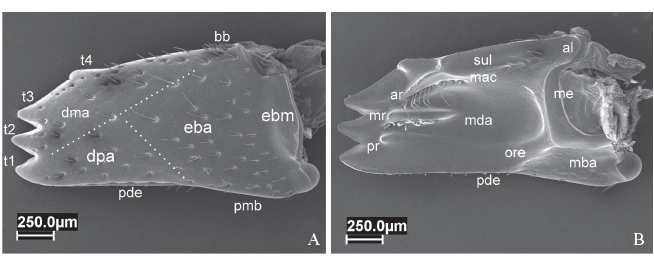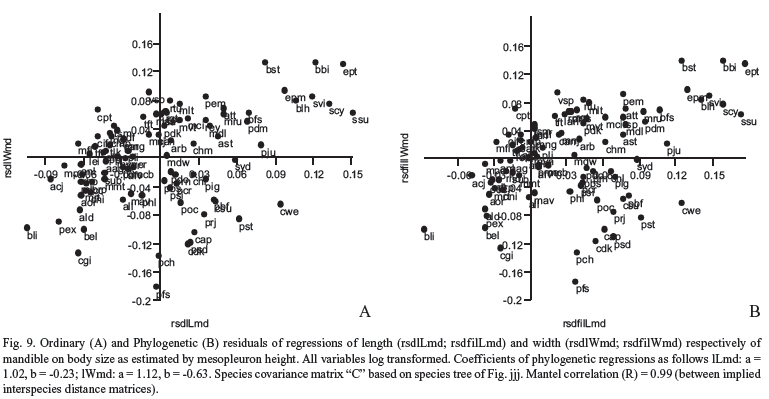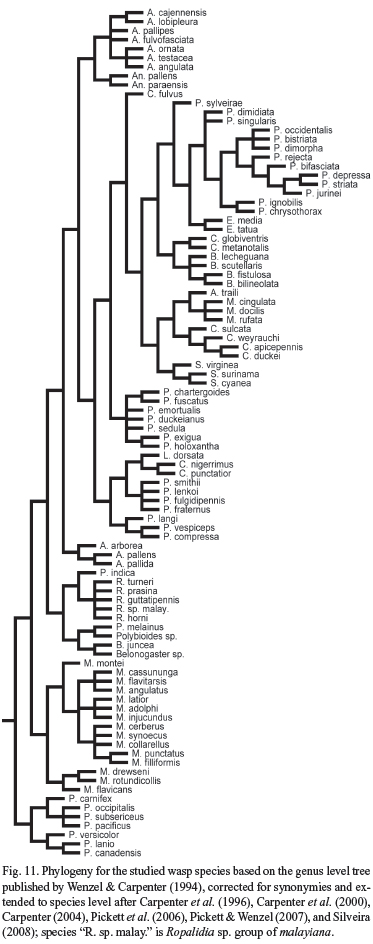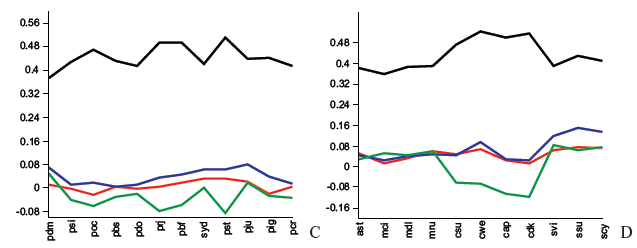Abstracts
Comparative morphology of the mandibles of female polistine social wasps (Hymenoptera, Vespidae, Polistinae). Diversity of mandibular forms in female polistines is explored and compared among 116 species of all polistine genera. Inferences about function are made and discussed based on observed form differences. Mandible length and width measurements are analyzed for a subset of polistine species plus two vespines and two eumenines. A variable expressing the ratio between these variables is also considered in morphometric analyses. The following mechanical interactions among mandible structural elements are highlighted: opposition and crossing of mandibles' apical teeth at the middle of the closing trajectory; shearing action of the apical teeth against mesial denticles of the opposite mandible; shearing action of the mandible anterior margin against the ventral margin of the clypeus. In the genera Agelaia and Angiopolybia, exceptionally developed mesial mandibular structures may be related to necrophagy. In some epiponine genera, poorly developed mesial denticles and strong torsion of mandibles may be partially related to use of short wood fibers in nest construction as advanced by Sarmiento (2004). The considerable morphological variation found across the subfamily Polistinae is certain to be important in taxonomic and phylogenetic studies at the genus and species levels.
Adaptation; form-function analysis; morphometrics; phylogenetic methods; systematics

 Comparative morphology of the mandibles of female polistine social wasps (Hymenoptera, Vespidae, Polistinae)
Comparative morphology of the mandibles of female polistine social wasps (Hymenoptera, Vespidae, Polistinae)
























